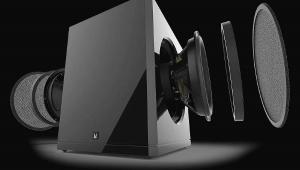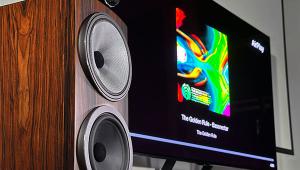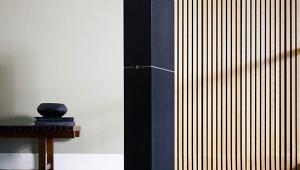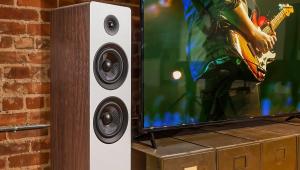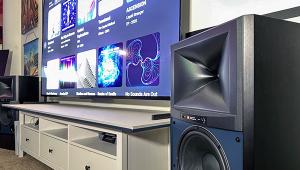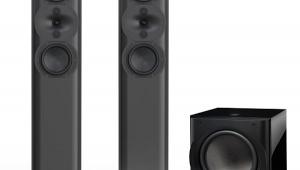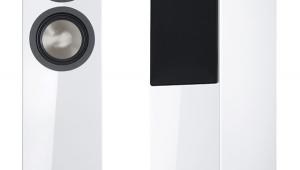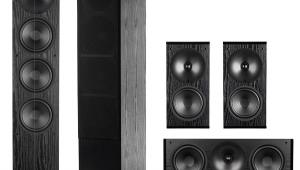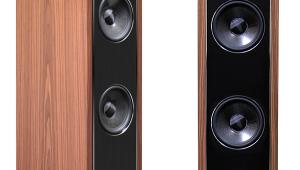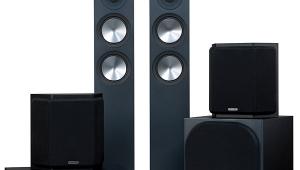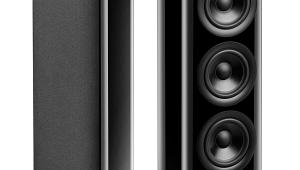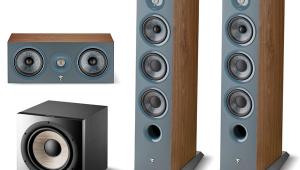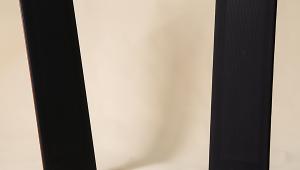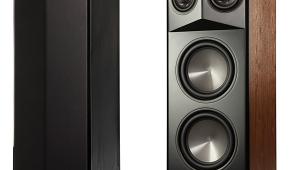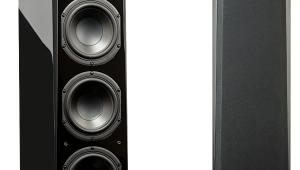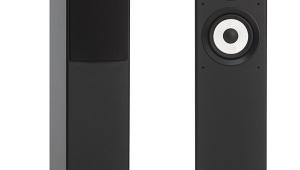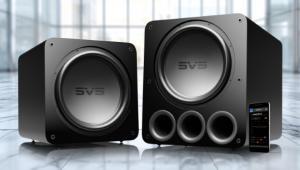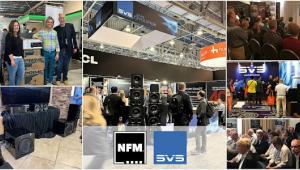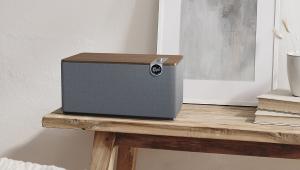M & K MP-4512 surround speaker system Measurements
We measured the M&K MP-4512's center and left channels, with very similar results. Their sensitivity measured approximately 83dB/W/m—a low value. The cabinet tuning was 122Hz for the left channel, 135Hz for the center. Their impedances were very nearly the same: a minimum of approximately 6.5ohms at 300Hz and a nominal value of 8ohms. This should be an easy speaker to drive, though the low sensitivity and the small drivers (despite the generous power-handling specs) suggest you shouldn't plan on driving this system to head-banger levels in a large room.
In our measurements of both the left- and center-channel speakers, the on-axis microphone position was directly in front of the center tweeter. While the horizontally configured drivers meant that there was a small difference in the response on each side as the mike was moved off-axis, this difference was relatively small. The off-axis measurements presented here were made with the mike moving to the right; for both speakers, this was the worst-case response.
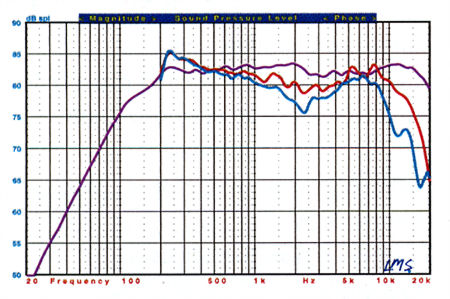
Fig.1: M&K MP-4512, left channel, pseudo-anechoic horizontal response at 45° (red) and 60° (blue) relative to tweeter axis.
The pseudo-anechoic response of the left-channel MP-4512 at tweeter height, averaged over a 30° forward horizontal angle and combined with the nearfield response of the woofer, is shown in Fig.1 (violet). The useful bass extends down to approximately 78Hz. The on-axis average is exceptionally smooth above about 220Hz for such an inexpensive speaker, and the off-axis response is acceptable for a speaker with horizontally mounted drivers. The +/-15° vertical response (not shown) follows the on-axis average within about +/-2dB from 200Hz to 10kHz.

Fig.2: M&K MP-4512, center channel, pseudo-anechoic vertical response at +15° (red) and –15° (blue) relative to tweeter axis.
Fig.2 shows the corresponding response measurements for the center-channel speaker array. The useful bass extends down to about 88Hz (–10dB). While not quite as smooth as the left-channel response, it's respectable both on- and off-axis. The +/-15° vertical response (not shown) again follows the on-axis average very closely.
In both cases, the grilles made the response more erratic in the high frequencies above 1kHz; for the left channel, the grille resulted in 2dB more output at 1.5kHz and a narrow, –4dB dip at 5.5kHz.
Relative to the measured responses we've seen for many speakers in this price range, the M&K's performance would have to be rated excellent. However, it definitely needs a subwoofer, and M&K's recommended crossover point of 200Hz, if your system can accommodate it, is good advice. A high crossover point will also ease the power-handling load of these low sensitivity speakers.—Thomas J. Norton
Both figures: Violet: Pseudo-anechoic response on tweeter axis, averaged across a 30° horizontal window, combined with nearfield response of woofers and port.
